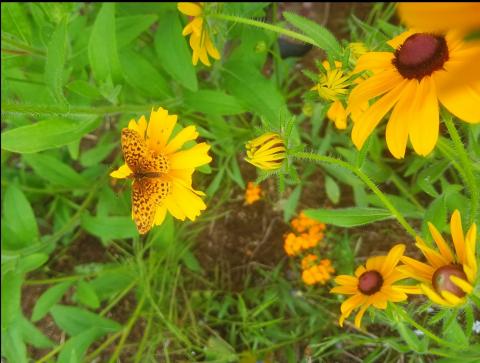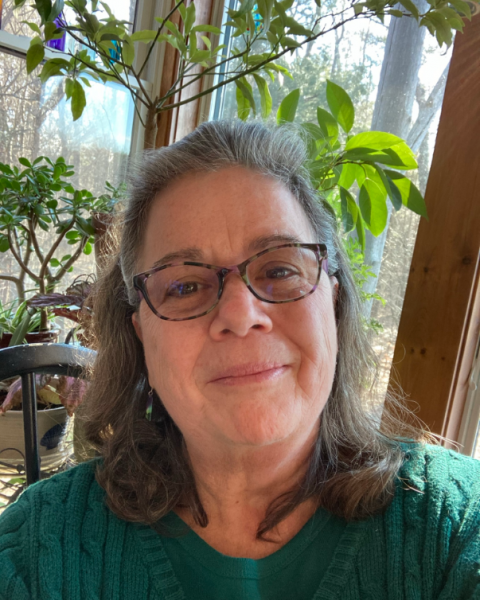An Appeal for Climate-Resilient Action

My alarming observation in mid-May that my azaleas and fruit trees next to our home were almost devoid of bees motivated me to reach out to others. While many confirmed seeing the same thing, I was puzzled that there were others who reported seeing lots of bees.
Since then I continue to notice other disturbing trends, including the fact that I am seeing only an occasional butterfly in my yard these past few weeks. This includes fritillaries and skippers which by this time last year were actively feeding on coreopsis and rudbeckia. Yet, again, while some report seeing few butterflies, others are observing plenty of these pollinators as well.
This conundrum led me to a newly released Plant Diversity Report that is a collaborative research effort by the Native Plant Trust and Nature Conservancy. The document is a comprehensive analysis of the impact of a changing climate on native plant diversity in relation to microclimate variability, and might offer clues about the discrepancy in the numbers of bees and butterflies that people are observing (http://www.nativeplanttrust.org/plant-diversity-report/).
Apparently, some microclimate sites are better suited than others for maintaining native plant diversity and overall biodiversity resilience in the face of climate degradation due to a variety of geophysical characteristics such as elevation, aspect, and slope. For example, one study notes a 10-degree (Fahrenheit) difference in soil temperature between six microhabitats along one mountain ridge in Vermont.
The dataset from the research has been incorporated into a detailed GIS map that uses a predictive scale to judge the climate resiliency of any given location (http://maps.tnc.org/resilientland/). The map shows that my two little acres, unfortunately, are considered to have “low to average” resiliency. Yet my friend, living on the other side of the mountain who is seeing “plenty of bees” is in an area labeled “highly climate resilient” according to the map. Could the variation in microclimates explain why she is seeing bees while I am not?
The unequal impacts of climate because of location (that are the topic of this report) is something that we humans must contend with as well. The 2018 NOAA Urban Island Study noted up to a 16-degree F difference in one city, with low-income neighborhoods being the hottest. I’m reminded of the years I lived in project housing with my young son in an apartment without air-conditioning, surrounded by a concrete jungle, and can only imagine how those living in such circumstances today are suffering with the increasing hotter temperatures (https://www.noaa.gov/news/hot-days-in-city-it-s-all-about-location).
According to the New York Times, an “attribution” team of climate scientists has determined that the recent unprecedented heat wave was exacerbated by climate change. Sadly, at least a few hundred people and probably more, who were mostly elderly, have died from that extreme heat event. The blatant reality is that climate change also presents a public health emergency, one that highlights related issues like environmental injustice, that can no longer be ignored!
So, what can people do in the face of this existential crisis that seems so overwhelming? For starters, it would help to stop minimizing and denying the extent of the problem.
I brainstormed some topics that involve either carbon reduction or adaptation that could be part of an outreach campaign:
· Create awareness about the Nature Conservancy/Native Plant Trust Plant Diversity Report which could be used as a tool by conservation commissions and land trusts. https://granitegeek.concordmonitor.com/2021/06/29/theres-climate-and-microclimate-connection-between-the-two-can-be-complex/
· Educate consumers and town officials about the new community power aggregation law that will enable ratepayers to collectively negotiate cheaper electricity rates while choosing up to 100% clean, renewable energy like the town of Hanover is doing. https://www.cpcnh.org/about
· Encourage town planning boards to adopt a climate adaptation plan like the one developed by the town of Campton. https://drive.google.com/file/d/18qW0Dld6mo6ubbXZbmTS_naa3bSqUh8I/view
· Support projects that plant trees to provide shade to cool low-income city neighborhoods like Phoenix, AR, is doing. https://www.scientificamerican.com/article/how-phoenix-is-working-to-beat-urban-heat/
· Recommend changes to lawn care that are climate-friendly like “no-mow Mays” that will keep dandelions blooming at a time when nectar sources are scarce. https://www.audubon.org/magazine/fall-2019/four-tips-climate-friendly-yard
· Educate consumers about food choices to limit greenhouse gas emissions including occasional non-meat meals (meatless Mondays). https://sph.umich.edu/pursuit/2019posts/meatless-monday-010219.html
· Encourage consumers to buy from grocery stores that take care to prevent leaks from greenhouse gas refrigerants. https://www.rpcv4ea.org/articles/commercial-cooling-culprits-can-cause-climate-change
No doubt taking measures like these would be a small contribution to the kind of systems-wide transformation that is urgently needed. Yet by acting in our own back yards and communities, perhaps we can foster a spirit of personal and collective resiliency while creating a societal shift that is necessary to minimize the impacts of what portends to be a planetary crisis. Given what’s at stake, what have we got to lose?
See Judith’s recent letter-to-the-editor in the Concord Monitor, “What’s the buzz about bees?”

